展覧会概要・
みどころ
展覧会概要
日本語
English
行楽(こうらく)弁当から毎日のお昼ごはんまで、お弁当は私たちの生活の中に深く根付いています。行楽弁当など誰かと一緒に食べる共食(きょうしょく)のお弁当は、地域の共同体を維持しそのつながりを深めるソーシャル・ツールとして、日本古来、農耕社会のハレの場などにおいても重要な役割を果たしてきました。誰かが誰かのために作るひとり用のお弁当は、その一つ一つに作る人と食べる人をつなぐ物語があり、作る人から食べる人への贈りものともいえます。どちらのお弁当も食べる時や場など、その人を取り巻く状況をよく考え、食材をよく見て、食べる時間や空間をデザインするかのように、箱の中に丁度よく詰めていきます。
本展は、日本独自の食文化であり、人と人をつなぐ「おべんとう」をコミュニケーション・デザインの視点から捉え、その魅力を来場者自身が体験しながら発見できる空間を作ります。会場は、「おべんとう」から見えてくるコミュニケーション・デザインをテーマに、遊び心のある江戸時代のユニークなデザインのお弁当箱や、現代の作家たちのインスタレーション、参加型の作品などを展示します。
出品作家は、この分野の第一人者でもあるオランダ在住の“イーティング・デザイナー”マライエ・フォーゲルサングをはじめ、NHK番組「サラメシ」でも有名な“お弁当ハンター”の写真家 阿部了、“発酵デザイナー”の小倉ヒラクらを始めとしたアーティスト8名の予定です。大人もファミリーも楽しい、見る・聞く・触れる、参加体験型の展覧会です。
本展の4つのみどころ

「おべんとう」!?
本展はお弁当をテーマとした、小倉ヒラクの新作のアニメーション作品から始まります。親しみやすいキャラクターが登場するこの作品を見ることで男女年齢問わず、まずは来館者にお弁当のことを思い起こしています。口ずさみやすいメロディと歌詞、振り付けで、歌って踊ると自然とお弁当のことがよくわかる作品です。
小倉ヒラク《おべんとうDAYS》2018年

コミュニケーションに注目
お弁当を作ることや食べることが生み出す、日常のコミュニケーションに注目した作品を展示します。
読者からの「誰々にこんなお弁当を作ってあげたい」というお便りに応えて、大塩あゆ美がお弁当を作り、平野太呂が撮影し、読者にレシピとお弁当箱が届けられるプロジェクト《あゆみ食堂のお弁当》や、お弁当を黙々と食べる姿から、食べている人とお弁当を作った人との関係性にまで想いが馳せられるような阿部了の作品《ひるけ》を紹介します。
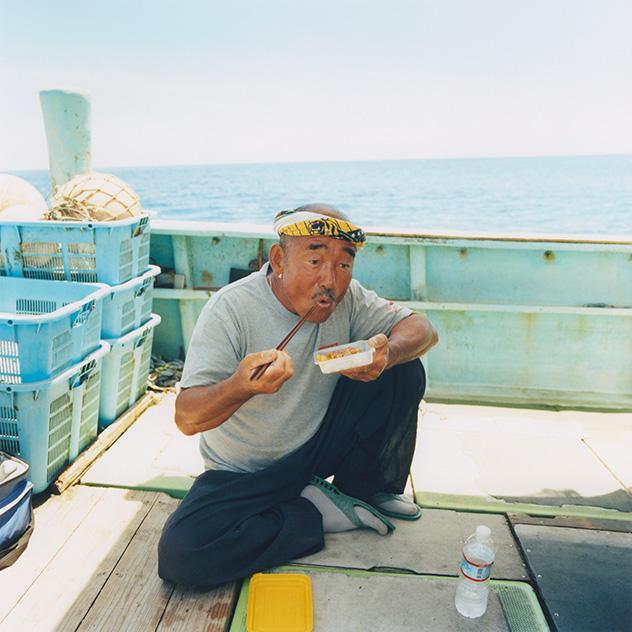
阿部了《ひるけ》2018年
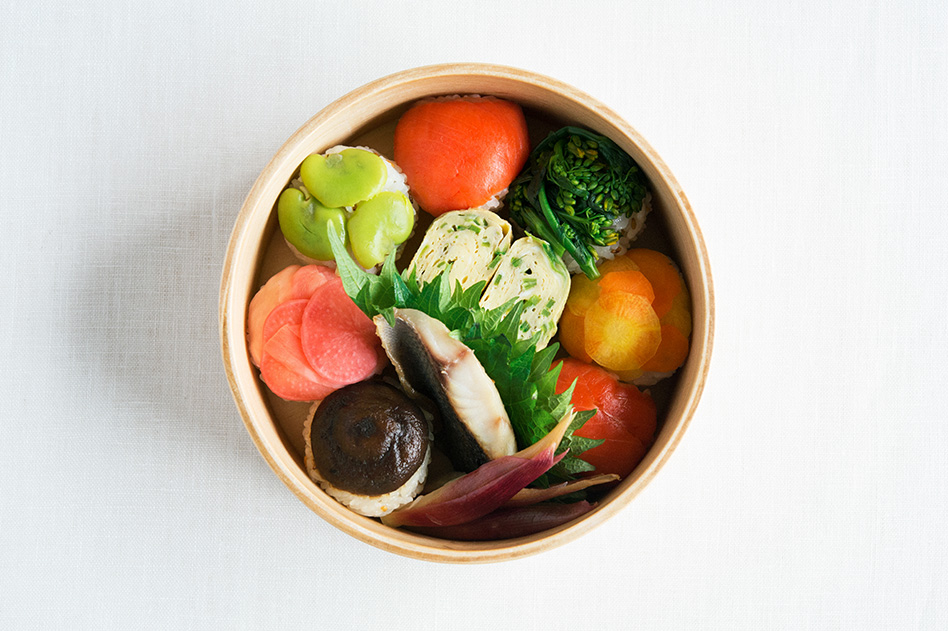
《あゆみ食堂のお弁当》2017年 料理:大塩あゆ美、写真:平野太呂
また、お弁当を介したコミュニケーションをみることで、自分と自分の身の回りの世界との関係について、じっくり考えることができる作品も紹介します。
小山田徹は自身が日々実践する家族とのお弁当づくりのアーカイブ《お父ちゃん弁当》を展示します。幼稚園に通う弟のために、小学生の姉がお弁当の指示書を書き、父親である小山田がそれを作ります。その指示書に描かれた桜島の噴火や蛇行する川と三日月湖といったテーマは、夜寝る前に読んだ本や散歩のときに見つけた植物や虫から着想されることもあります。
森内康博は、中学生が親の手を借りず自分でお弁当を作る様子を子どもたち自身がドキュメンタリー映像にするワークショップを行い、そのプロジェクトを映像作品として展示します。
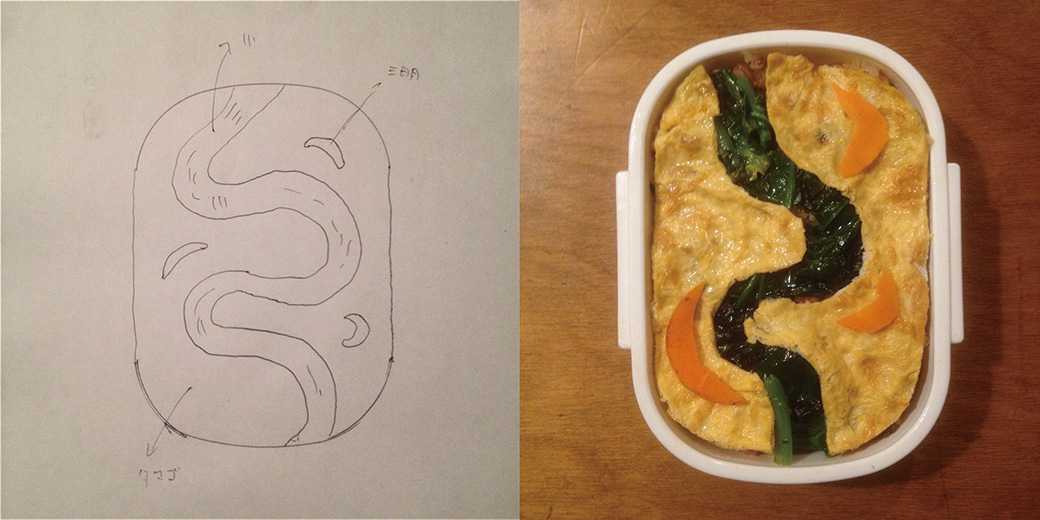
小山田徹《お父ちゃん弁当》2017年

森内康博《Making of BENTO》イメージスケッチ

「おべんとう」を再発見
お弁当が生み出すコミュニケーションに注目する作品の中でも、私たちの慣れ親しんだお弁当を、普段とは違う視点で捉える参加型作品を紹介します。
食べることをデザインするイーティング・デザイナーであるマライエ・フォーゲルサングは、お弁当の「触ることや見ることができない」側面、例えば人と人とのつながりや記憶、その未来像などを、生き生きとした物語として表現し、その物語に来館者を誘います。
※本展示作品には奈良県産吉野すぎを使用しています。 提供:奈良県木材協同組合連合会
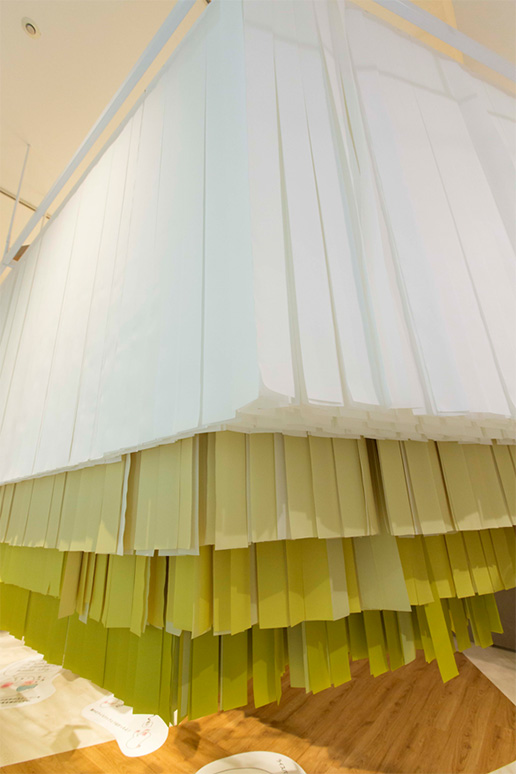
マライエ・フォーゲルサング《intangible bento》
展示イメージ(参考)
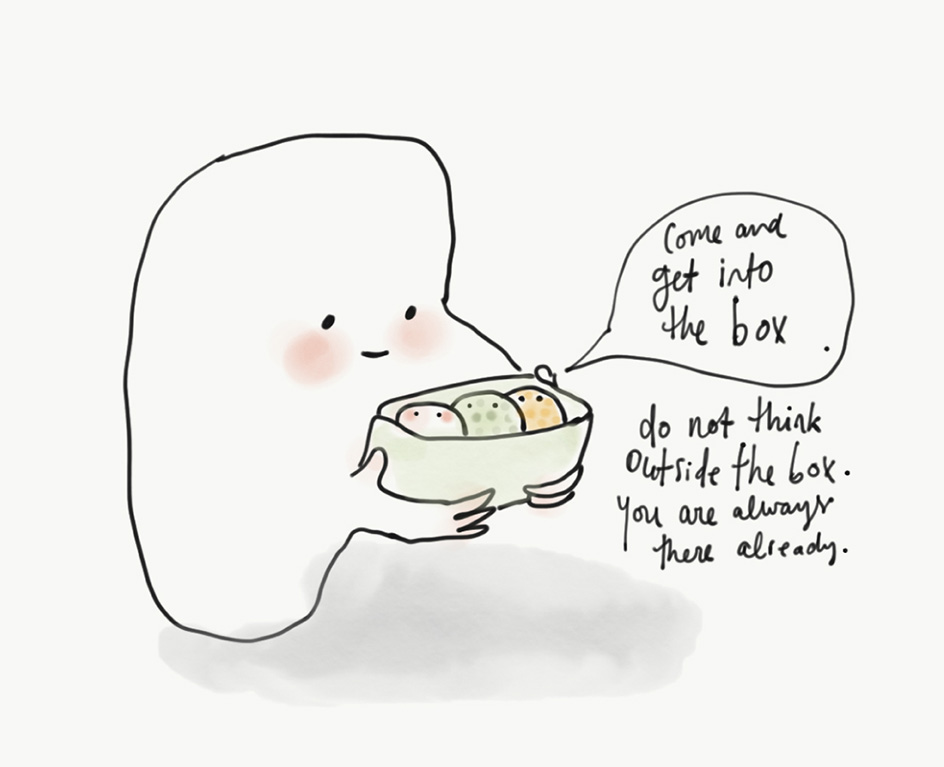
マライエ・フォーゲルサング《intangible bento》 イメージスケッチ
北澤潤は、お弁当を「箱」と「布」によって自由にコミュニケーション空間を創出するツールとして捉え、美術館の中に、お弁当の「おすそわけ」マインドを考える《おすそわけ横丁》という異空間を作り出します。
来館者自身が、よくみて、考え、お弁当を再発見することができる実験室のような空間です。
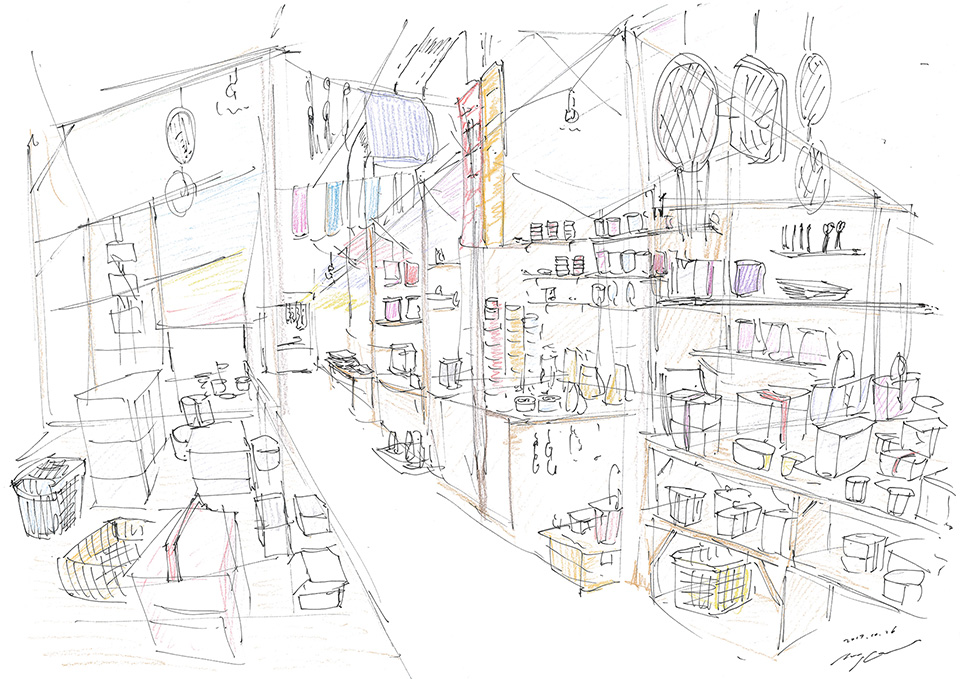
北澤潤《FRAGMENTS PASSAGE -おすそわけ横丁》イメージスケッチ

ユニークなお弁当箱
宴などの共食の場で使われたユニークなデザインが施された江戸時代のお弁当箱や、食べる状況に応じてデザインされたひとり分のお弁当箱、そして世界のお弁当箱の展示を通じて、目的に合わせてデザインされたプロダクトとしてのお弁当箱に注目します。
(出品予定)
江戸時代から昭和・現代までの日本のお弁当箱
・お辧當箱博物館所蔵、北区飛鳥山博物館所蔵、新宿区立新宿歴史博物館寄託、個人所蔵
アジア、アフリカ、ヨーロッパなどの世界のお弁当箱
・国立民族学博物館所蔵
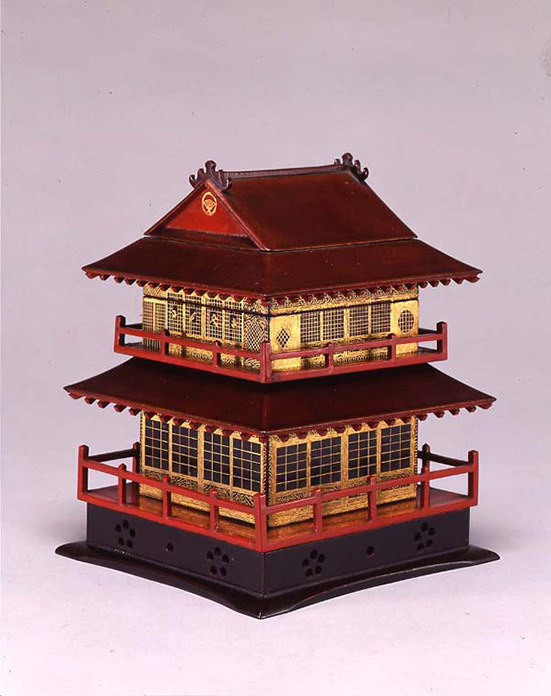
楼閣形弁当(ろうかくがたべんとう)
個人蔵
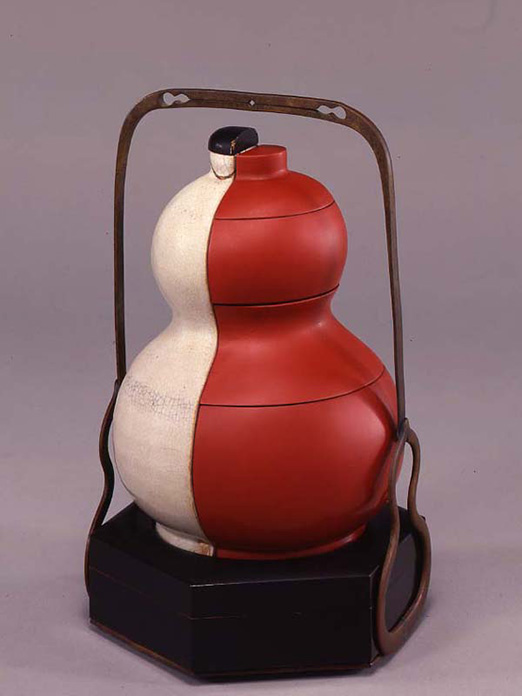
白陶朱漆組合せ瓢成り弁当
(はくとうしゅうるしくみあわせひょうなりべんとう)
個人蔵
Outline / Highlight
Outline
日本語
English
From picnic meals to our daily lunchbox, the bento (a Japanese-style meal-in-a-box) is part of the fabric of everyday life in Japan. Sometimes they are communally eaten, such as those prepared for picnics and other outings; these have served since agrarian times as a social tool, for example at special social occasions, that holds the community together and strengthens bonds. Others are made to be eaten by one person, put together by someone for another – like a gift that contains the story connecting the preparer and the eater. With both kinds, the person preparing the bento first considers factors like the time and situation in which the bento will be eaten, then arranges the food in the box with care and consideration, as if to design the very time and space of eating.
The coming exhibition looks at the bento from this communication design angle, providing a setting in which people can experience and discover for themselves the appeal of this Japanese food culture that brings people together. The entire venue is curated around this concept of communicating design through bento, with exhibits that range from bento boxes with unique designs dating from the Edo period (1603–1868), to video works, installations, and participatory artworks by contemporary artists.
There are eight artists scheduled to participate: Marije Vogelzang, the Dutch “eating designer” who is a leading figure in the field of bento; photographer Satoru Abe, a “bento hunter” known for his appearances on the NHK program Salameshi (Workers’ lunch); the “fermentation designer” Hiraku Ogura, and more.
It will be a participatory exhibition that is fun for adults and children alike, with artworks to see, hear and touch.
Four Highlights of the Exhibition

and dance...!?
The exhibition starts with a new bento-themed animation by Hiraku Ogura. By watching this work featuring charming characters, we invite visitors, regardless of age or gender, to get thinking about bento. Complete with catchy lyrics, melody and choreography, the animation will allow people to understand the essence of bento intuitively through singing and dancing.
Hiraku Ogura 《BENTO DAYS》 2018

by bento
There will be exhibits that focus on the day-to-day communication that is born out of making and eating bento. One such exhibit is《Bento of Ayumi shokudo – bento made by Ayumi’s kitchen》. In this project, readers sent in requests for bentos they wanted to make for a special someone; Ayumi Ooshio then devised a recipe and made the bento, Taro Hirano photographed it, then the recipe and bento box were delivered to the reader. Another work is《Hiruke – lunch time》by Satoru Abe, a collection of photographs that capture people quietly enjoying their bentos. The work invites viewers to contemplate the relationships between those eating the bentos and those who prepared them.

Satoru Abe 《Hiruke-lunch time》 2018

photo by Taro Hirano , cooking by Ayumi Ooshio《Bento of Ayumi shokudo -bento made by Ayumi ’s kitchen》 2017
There are also artworks that allow visitors to reflect upon how they themselves are connected to the world around them, through observing the communication mediated by bento.
Toru Koyamada will be presenting 《Daddy Bento》, an archive of his family’s everyday bento-making process. His daughter, a primary schooler, writes instructions for a bento for her younger brother who goes to nursery school; Koyamada, their father, then makes the bento accordingly. The themes written on the instructions – “Eruption of Mt. Sakurajima” or “Meandering river with ox-bow lake” – might sometimes be inspired by bedtime reading, sometimes by a plant or insect found on a walk.
Yasuhiro Moriuchi is running a workshop in which junior high school students create documentary footage of themselves making bento, without receiving help from their parents. The project will be exhibited as a video work.

Toru Koyamada 《Daddy Bento》 2017

Yasuhiro Moriuchi 《Making of BENTO》 installation plan

through participatory art
Among the works that focus on bento-born communication are participatory artworks that approach the bento from a different angle to how we normally think about it.
Marije Vogelzang, an “eating designer,” expresses the intangible, invisible aspects of bento – human connections, memories, hopes for the future and so on – welcoming visitors into her lively narratives.

Marije Vogelzang 《intangible bento》
installation plan

Marije Vogelzang 《intangible bento》 drawing of《intangible bento》
Jun Kitazawa takes the bento as a tool with which to freely create a communication space out of a box and a piece of cloth (traditionally used to wrap the box). He is constructing a peculiar space titled 《FRAGMENTS PASSAGE – Osusowake Yokocho》 inside the museum, which focuses on the sharing mentality behind the bento culture. The work will be a laboratory-like environment where the visitors can examine, reflect upon and rediscover the bento for themselves.

Jun Kitazawa 《FRAGMENTS PASSAGE - Osusowake Yokocho》 installation plan

bento boxes
There will be a wide range of bento boxes on display: ones with unique designs dating to the Edo period (1603–1868), used at communal eating occasions such as feasts; single-portion bento boxes designed for different eating environments and situations; and bento boxes from around the world. Together they highlight the aspect of the bento box as a product designed according to purpose.
Exhibits (TBC):
Japanese bento boxes from Edo period, Showa period, and the present day
- From the collections of OBENTOBAKO Museum, Kita City Asukayama Museum, Shinjuku Historical Museum, and private collections
Bento boxes around the world (Asia, Africa, Europe, etc.)
- From the collection of the National Museum of Ethnology

Rokakugata bento (private collection)

Hakutosyuurushi kumiawase hyonari bento
(private collection)